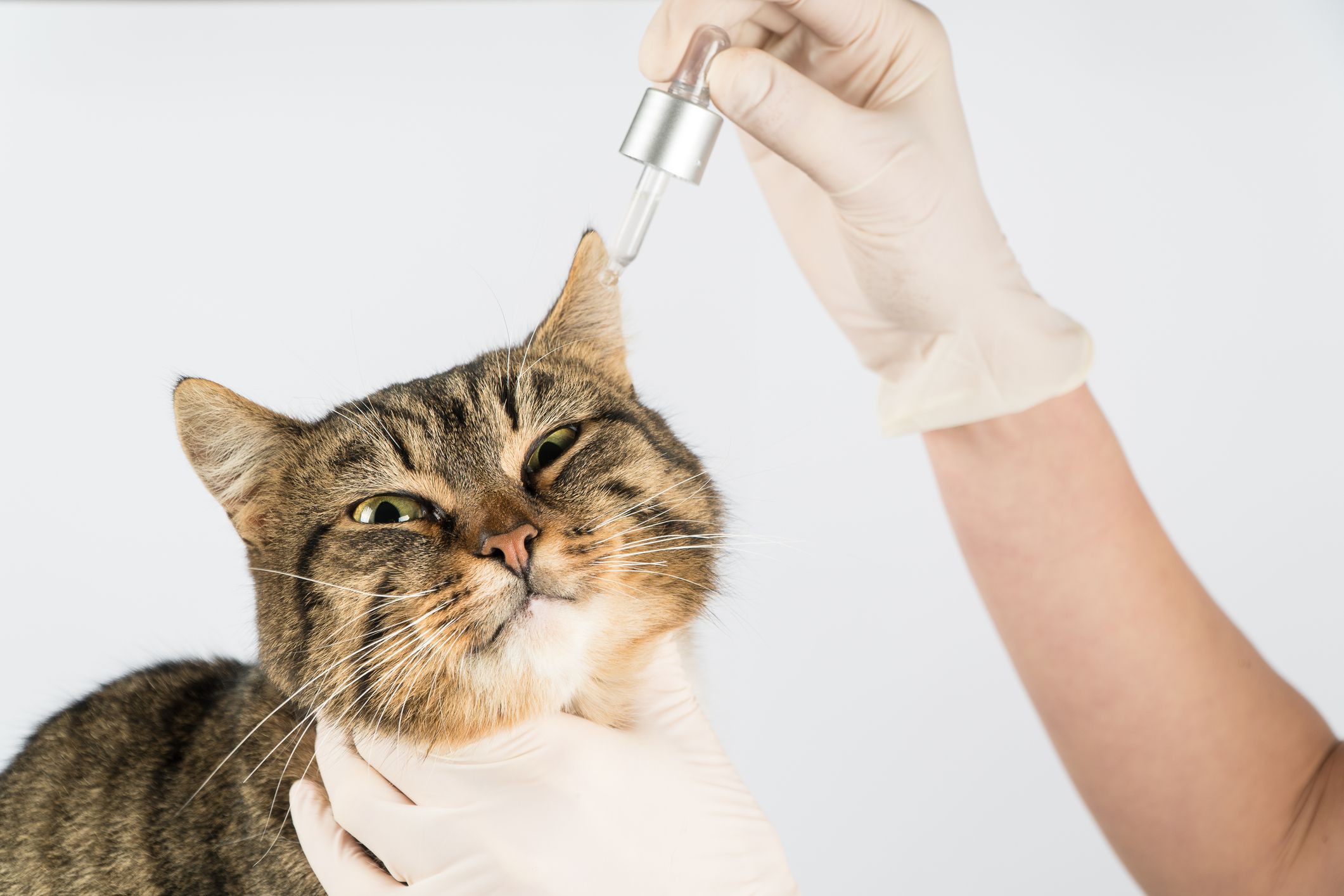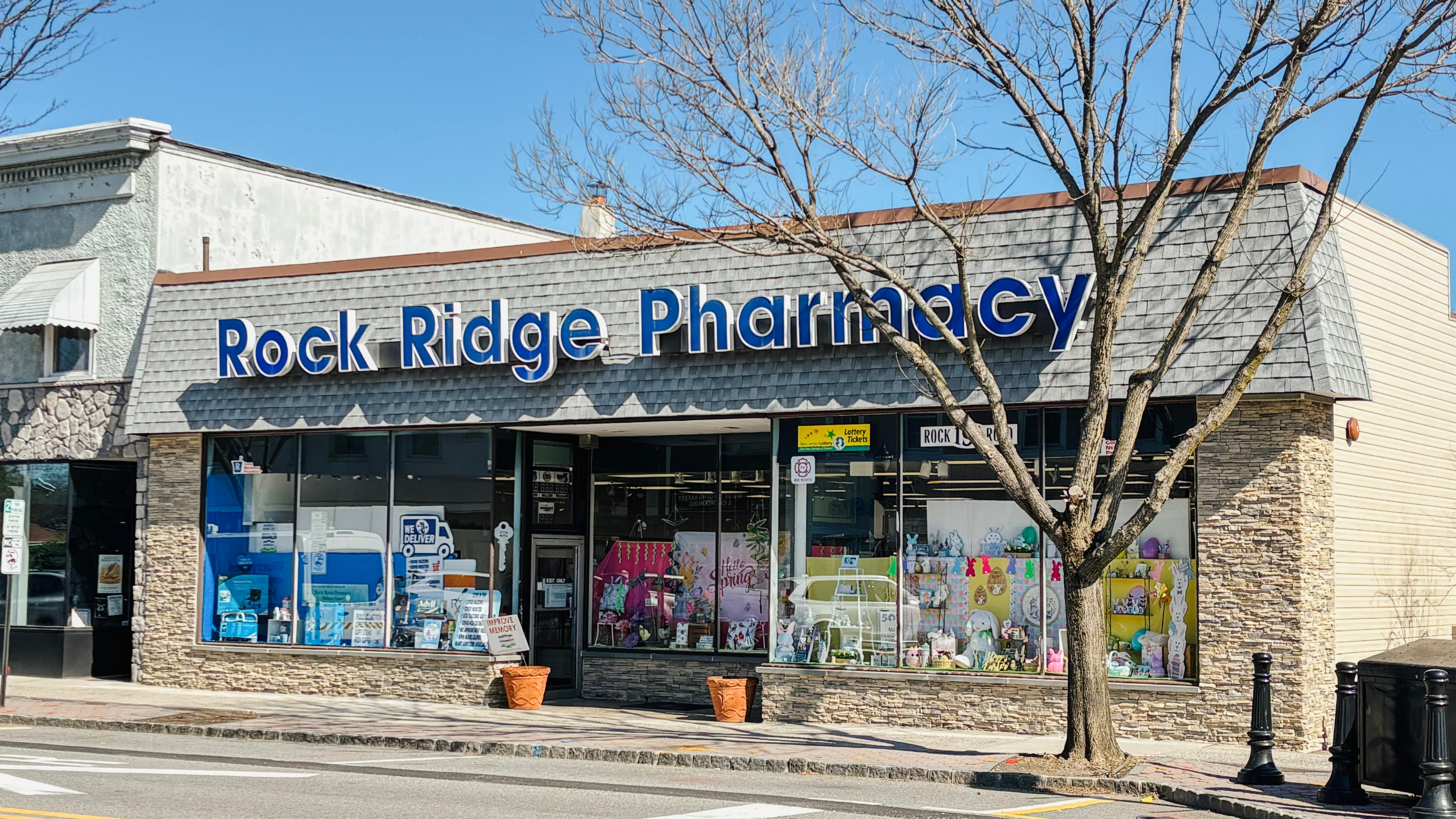Veterinary Ophthalmic Care • Prescription Required
Flurbiprofen Eye Drops for Pets
Custom-compounded anti-inflammatory ophthalmic solutions for pets needing post-surgical care or treatment of ocular inflammation.
Sterile formulations • Tailored dosing • Trusted pharmacy support
What Is Flurbiprofen Sodium Dihydrate?
Flurbiprofen Sodium Dihydrate is a non-steroidal anti-inflammatory drug (NSAID) designed for ophthalmic use in pets. It works by blocking prostaglandin production, which helps reduce pain, redness, and inflammation in the eyes.
Commonly prescribed for post-surgical care and ocular inflammation management, it provides targeted relief and supports healing.
Compounded in a USP <797>-compliant sterile facility, our formulations can be customized for concentration and preservative-free needs, ensuring safe and effective use.

Why Use Compounded Flurbiprofen?
Commercial veterinary flurbiprofen eye drops are rarely available. Compounding ensures safe, effective, and pet-friendly anti-inflammatory ophthalmic care.
Custom Concentrations
Compounded at 0.03% to 0.1%, adjusted to meet your pet’s condition.
Preservative-Free
Ideal for post-surgical healing and sensitive eyes, minimizing irritation.
Comfortable Base
Formulated with ophthalmic-safe carriers for better comfort and absorption.
Sterile Preparation
Compounded in USP <797>-compliant sterile facilities for safety and consistency.
Pharmacist Expertise
Guided by pharmacists to ensure potency, stability, and safe use under veterinary direction.
How Flurbiprofen Works
Flurbiprofen Sodium Dihydrate targets the body’s inflammatory pathways to reduce swelling, pain, and tissue damage in pets requiring ocular care.
Blocks Prostaglandins
Inhibits cyclooxygenase enzymes (COX), reducing prostaglandin production that drives inflammation.
Controls Inflammation
Decreases redness, swelling, and irritation in the conjunctiva and cornea.
Post-Surgical Protection
Minimizes swelling and scarring after eye surgery, supporting smoother healing.
Pain Relief
Provides analgesic benefits by reducing inflammatory pain and discomfort.
| Medication | Strength | Form | Base | Primary Use |
|---|---|---|---|---|
| Flurbiprofen Sodium | 0.04% | Eye Drops (10ml) | Aqueous | Anti-inflammatory, post-surgical |
Understanding the Artificial Tears Base
Gentle, preservative-free formulations designed for inflamed and post-surgical eyes
Aqueous Base
Fast absorption with immediate anti-inflammatory action. Comfortable and economical for most pets.
Buffered Saline
pH-optimized for reduced stinging. Better for sensitive eyes and extended post-surgical use.
Buffered + Additives
Enhanced stability and comfort. Includes agents that support healing and extend effectiveness.
Premium Options
Specialized formulations for maximum anti-inflammatory effect. Highest cost due to custom compounding.
How to Give the Drops
Step-by-step guide for safe application
Dosage Guidelines & Cost Considerations
Typical Dose
1 drop in affected eye(s) 2–4 times daily as directed by your veterinarian.
Treatment Duration
Usually 1–4 weeks, depending on post-surgical recovery or inflammation.
Tapering
May require gradual reduction in dosing rather than sudden discontinuation.
Cost Estimate
Short-term: weekly cost; long-term: monthly expense — call Rock Ridge Pharmacy for details.
If You Miss a Dose
Give when remembered, but keep consistent timing for best anti-inflammatory effect.
Veterinary Guidance
Always follow veterinary instructions — dosing may vary with condition and response.
Storage & Safety Information
Proper storage and monitoring ensure Flurbiprofen ophthalmic drops remain safe and effective.
Storage & Handling
- Store at room temperature unless otherwise directed.
- Protect from light; keep in original amber container.
- Do not freeze or expose to heat.
- Replace cap tightly after each use.
- Check expiration date; discard if cloudy or discolored.
Safety & Side Effects
Common mild effects: brief stinging, mild redness, or temporary blurred vision after use.
Contact your vet if: pain worsens, redness persists, vision changes, or signs of delayed healing occur.
Treatment Timeline & Cost Planning
Days 1–3 (Post-Surgery)
Maximum anti-inflammatory effect required.
Cost: Highest frequency dosing, higher weekly expense.
Week 1–2
Ongoing inflammation control; dose may be reduced.
Cost: Moderate weekly expense.
Week 2–4
Tapering phase or chronic use.
Cost: Reduced frequency, lower weekly cost.
Long-term (If Needed)
Lowest effective dose for ongoing inflammation.
Cost: Minimal monthly expense.
Veterinary Monitoring
More frequent early checks, then as needed.
Additional cost: Per visit, especially post-surgery.

Why Choose Rock Ridge Pharmacy for Veterinary Eye Drops?
- PCAB-accredited & USP <797> sterile lab ensuring safety and quality.
- Veterinary compounding expertise trusted since 1950.
- Custom dosing & formulations for different species and conditions.
- Fast turnaround — most prescriptions ready in 1–2 business days.
- Pharmacist support for storage, use, and follow-up care.
Rock Ridge Pharmacy works with veterinarians and pet owners to provide safe, sterile, and personalized ophthalmic solutions backed by decades of trusted care.
FAQs About Flurbiprofen Sodium Dihydrate Eye Drops at Rock Ridge Pharmacy
Do I need a prescription?
Yes. Flurbiprofen is only available with a veterinarian's prescription and requires proper diagnosis and monitoring.
How much will this cost for post-surgical care?
Typical post-surgical treatment (2–4 weeks) costs $60–120 total, depending on strength and frequency. Most cases require only short-term use.
Does pet insurance cover this medication?
Most pet insurance plans cover prescription medications for covered conditions, especially post-surgical care. Keep receipts for reimbursement.
How quickly does it work?
Anti-inflammatory effects typically begin within 30–60 minutes, with peak effects at 2–4 hours. Full benefit develops over 24–48 hours of consistent use.
Can this be used long-term?
While possible, long-term use requires careful veterinary monitoring due to potential NSAID effects. Most use is short-term for specific conditions.
What if my pet has surgery complications?
Contact your veterinarian immediately. Our pharmacist can coordinate with your vet for formulation adjustments if needed.
Can I use this with other eye medications?
Yes, but timing is crucial. Wait 5–10 minutes between different eye drops. Our pharmacist will provide specific sequencing instructions.
Is it preservative-free?
We offer preservative-free formulations, especially important for post-surgical healing. This may add $10–15 to the base cost.
What's the difference between strengths?
Higher concentrations (0.1%) are used for severe inflammation or post-surgical care, while lower concentrations (0.03%) may be sufficient for mild conditions.
Can I store this at room temperature?
Some formulations can be stored at room temperature, while others require refrigeration. We'll provide specific storage instructions with your medication.
What if I miss a dose after surgery?
Give the missed dose as soon as possible, then resume regular schedule. Consistent dosing is important for optimal post-surgical healing.
Can this be used in both dogs and cats?
Yes, though cats may be more sensitive to NSAIDs and require closer monitoring. Our pharmacist will provide species-specific guidance.
How do I know if it's working?
You should notice reduced redness, less squinting, and improved comfort. Post-surgically, proper healing progression as assessed by your veterinarian.
Are there interactions with oral medications?
Possible interactions with other NSAIDs, steroids, or blood-thinning medications. Provide complete medication list to your veterinarian and pharmacist.
What if my pet shows signs of discomfort after application?
Brief stinging is normal, but persistent pain or worsening symptoms require immediate veterinary attention.
Can this cause corneal problems?
Rarely, but NSAIDs can potentially delay corneal healing. This is why veterinary monitoring is essential, especially post-surgically.
What payment options are available?
We accept cash, credit cards, CareCredit, and can coordinate with pet insurance. Short-term treatments are often more budget-friendly than long-term medications.
